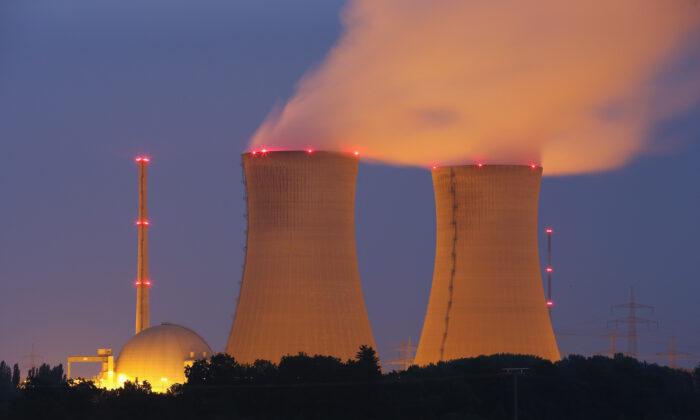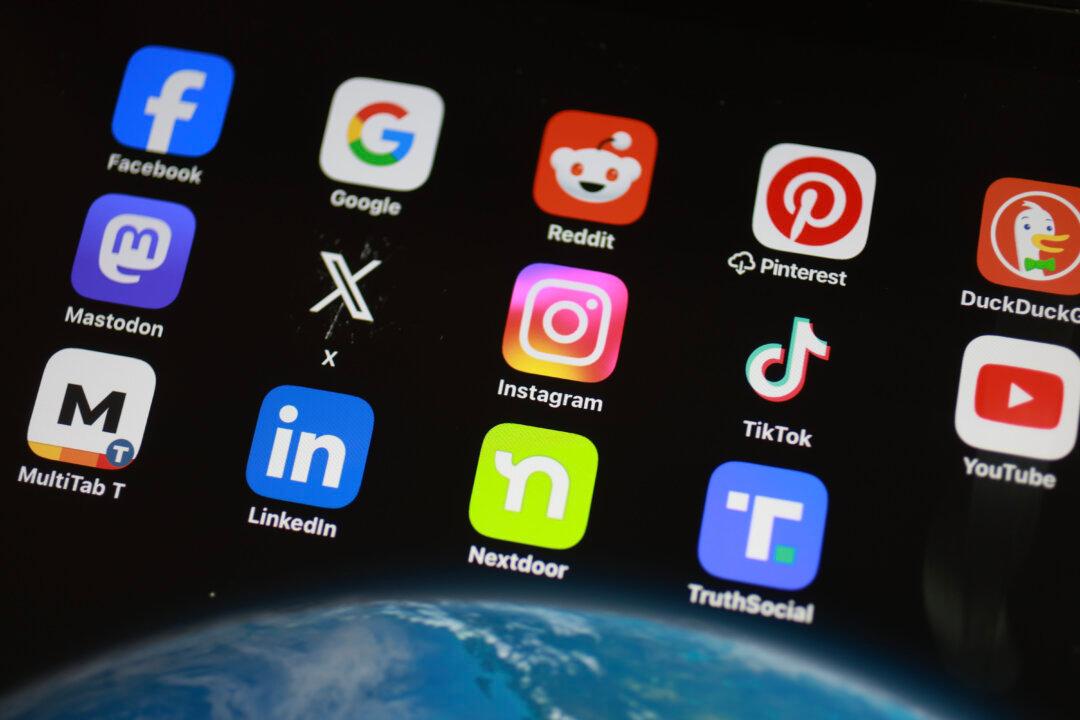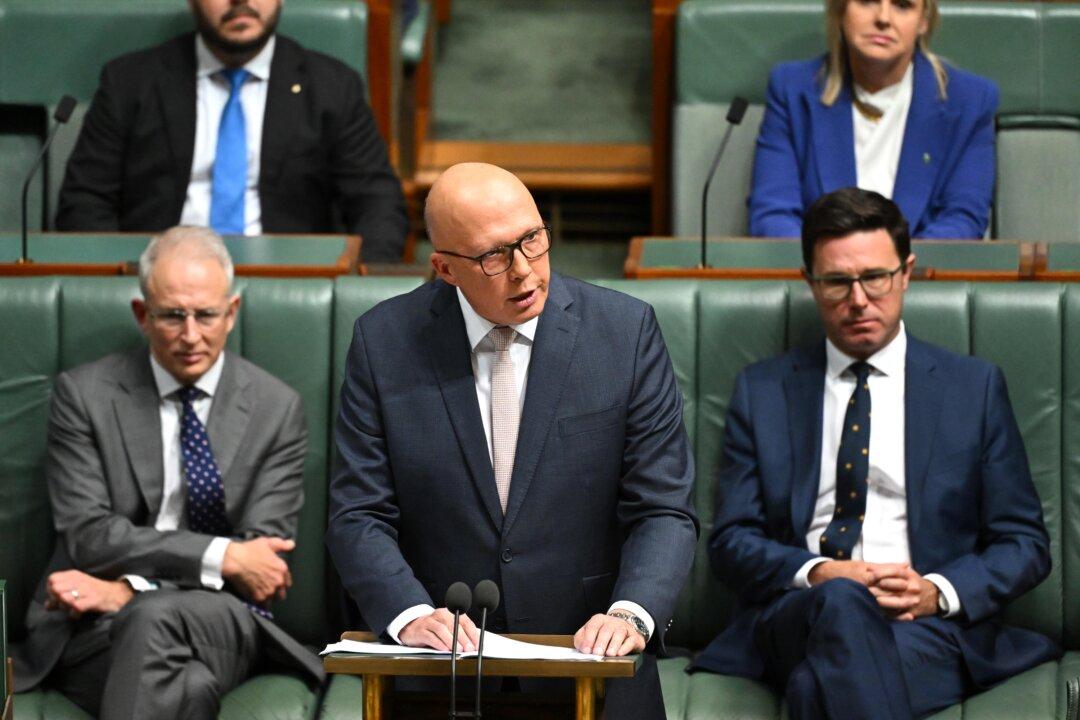If you can’t be a good leader, then being a good follower is just as good.
With that, Australia’s Energy Minister Chris Bowen should follow them.
According to Newspoll, 55 percent of Australians support using small modular reactors, while 31 percent oppose it.
Significantly, the highest support at 65 percent was amongst Australians 18-34, the group that is most environmentally conscious, and also most likely to vote Labor or Greens.
Support has been building for a while, but Labor continues to oppose it.
My think tank did a poll on nuclear three years ago. While our sample doesn’t allow for the same absolute degree of accuracy as Newspoll, it found that 47 percent supported nuclear while 39 percent opposed it.
Much of the support three years ago was because thinking Australians had concluded that it was impossible to run a grid on wind and solar energy, and therefore impossible to meet net zero, or anything like it, without the only non-emitting baseload source of power—nuclear—in the mix.
I suspected before that that attitudes had changed through conversations with left-leaning, particularly female, friends who had reluctantly come to the conclusion nuclear was inevitable to fight climate change.
The change of mood was confirmed for me when the USS Ronald Reagan, powered by two 70 MW nuclear power generators, was berthed for a couple of weeks in the Brisbane River without fear or even comment in 2019.
People even toured the ship with two small modular nuclear reactors humming around them, and keeping the lights on.
In the 60s at the height of anti-nuclear hysteria, there would have been a flotilla of rainbow-decorated kayaks and surf skis trying to block the ship from berthing. In the 2000s—nothing.
These countries include the United States, the United Kingdom, Canada, Finland, France, Japan, and South Korea.
Nuclear Is Unpopular?
Mr. Bowen’s article carried a large number of untrue, or deceptive, claims.Typical of many renewables advocates he boosts the amount being installed by substituting capacity for output. It may be true that, “Last year, the world installed 440GW of renewable capacity. This is more than the world’s entire existing nuclear capacity.”
Except that 440 GW of renewable capacity only operates around 30 percent of the time, while nuclear can manage over 90 percent, so it’s more like one-third of existing nuclear capacity.
He also claims that by next year, renewables will surpass coal as a share of power generation.
As the graph below, derived by Our World in Data from International Energy Association data, demonstrates, this is only likely in a parallel universe.
Solar is 2 percent, wind 3 percent, nuclear 4 percent, and coal a massive 25 percent. These are 2022 figures, the latest available, and while they show renewables a long way from overtaking coal, they also show nuclear at a very low level, albeit higher than either wind or solar.
But to measure the prospects of the different technologies you have to ask what job it is that each can do.
Plainly if coal, gas, and oil, which produce on-demand power, are to decrease, then nuclear is the only technology that can replace them. This argues that the world in a couple of hundred years is likely to be dominated by nuclear.
The extent of the actual, planned, and projected build of nuclear also makes a mockery of the few cherry-picked examples of nuclear projects, like the UK’s Hinkley C, that are in trouble and that the minister relies on to “prove” nuclear won’t work.
He also claims: “The U.S. has now abandoned its “flagship” commercial-scale pilot SMR (promised back in 2008), wearing 70 percent cost blowouts without having started construction on a single reactor.”
This appears to be a reference to NuScale, not in fact “the U.S.” but a public company, which has had one project for its revolutionary design fall through.
Nuclear Too Expensive?
Minister Bowen also claims that nuclear is un-financial. Well, if it is, then he has nothing to worry about as no one will want to build nuclear power here, preferring to stay with his favoured alternatives.Except that his renewables are so “cheap” they can only operate with government subsidies.
The government relies on the CSIRO’s GenCost report to claim nuclear is too expensive, despite international, real-world data that proves this to be wrong.
For instance, France is 70 percent nuclear, and has a price of electricity less than the average for Europe.
That’s less than we pay at the moment.
If we want to be a manufacturing powerhouse like Korea, then that is the sort of price for electricity we will need to achieve.
But Why Does Nuclear Take So Long to Build?
There are two reasons why he can cherry-pick some examples to demonstrate problems with nuclear.Because most European countries haven’t built a nuclear facility in a long time they have lost their expertise, and so builds are of necessity, more expensive.
And we have wrapped the industry in regulatory cocoons which prolongs the approval time agonisingly.
Nuclear is highly capital intensive, and time equals money. This can be seen in the graph below where the capital cost of building a nuclear power plant ranges from approximately $2,000 per KW in China, Korea, and Russia, to $12,000 in the United States.
The Russians, Chinese, and Koreans have been constantly building nuclear power plants so they have expertise and a regulatory regime that is fit for purpose.
Intriguingly the UAE, which more than rivals Australia for continuous and strong sunlight, and so should have plentiful renewable energy potential, is not only building a nuclear power plant, but at the lower end of cost.
This is because they have the political will to make smart decisions, and are wise enough to buy their reactor from the Koreans.
In Australia, rather than baying at the atoms, the minister ought to be clearing away the weeds impeding our ability to go nuclear.
This includes two acts of parliament.
The Environmental Protection and Biodiversity Conservation Act (which is currently being revised by his colleague, the Environment Minister Tanya Plibersek, and the Australian Radiation Protection and Nuclear Safety Act 1998.
No one is asking the minister to build a nuclear power plant himself. They are asking him to open up his mind and see what the public sees.
Renewable energy is a niche generation source that can’t power a modern civilisation on its own, and if you are serious about zero emissions there is only one technology that can provide it at a reasonable cost.







